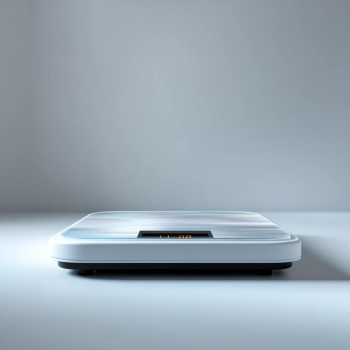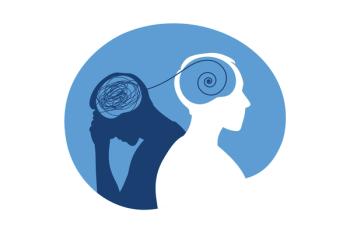
- Psychiatric Times Vol 25 No 1
- Volume 25
- Issue 1
Brain Stimulation Therapies for Treatment-Resistant Depression
Evidence for Use of Neurostimulating Techniques
Treatment-resistant depression (TRD), often defined as insufficient response to an appropriate trial of at least 1 antidepressant in patients with depressive illness, is receiving growing attention by clinicians and researchers alike. As Papakostas1 reported last year in Psychiatric Times, some studies indicate that as many as half of patients do not achieve remission of depressive illness using standard therapies. A recent 2-year prospective study of patients with TRD showed that even after 24 months of treatment as usual (medications, psychotherapy, light therapy, or electroconvulsive therapy [ECT]), there was significant morbidity in 90% of patients.2 As discouraging as these figures might seem, the recent development of new neurostimulation techniques for TRD offers some hope for patients who have refractory depression.
Neurostimulation has been defined as a "physical intervention that utilizes application of either electric current or magnetic field to stimulate the brain."3 The most commonly used type of neurostimulation for depression in the United States, ECT has existed for decades. Newer neurostimulation methods, such as vagus nerve stimulation (VNS), repetitive transcranial magnetic stimulation (rTMS), and magnetic seizure therapy (MST), show some promise. What follows is a brief review of these various techniques and the evidence for their use in TRD.
Electroconvulsive therapy
For more than half a century, ECT has been an important treatment for patients with severe psychiatric illness. Current indications for this modality include severe depression (especially with psychotic features), bipolar disorder, schizophrenia, and catatonia. ECT is particularly beneficial when a more rapid improvement in symptoms is indicated. There is also some evidence that ECT may be useful for improving the motor symptoms of Parkinson disease.4
ECT involves the application of an electrical stimulus to the patient's head to intentionally induce seizure activity. Before application of the stimulus, the patient is anesthetized with an ultrabrief agent (usually methohexital) and is given a neuromuscular paralytic agent (usually succinylcholine) to prevent injury caused by muscle convulsions. Anticholinergic agents are sometimes used to reduce the risk of bradycardia that can occur immediately following stimulation and also in the postictal period.5 Because of the nature of the procedure, ECT is usually conducted in a hospital (sometimes in specialized ECT suites) with the aid of an anesthesiologist.
Electrode placement and intensity of the stimulus have significant effects on both the effectiveness of treatment and tolerability. Electrodes are usually placed in the frontotemporal region of the head and there is evidence to indicate that bilateral application may be somewhat better than right unilateral placement at reducing depressive symptoms. However, the greater degree of cognitive impairment with bilateral stimulation may mitigate its overall effectiveness.6
Efficacy data for ECT indicate that as many as 90% of patients may show a positive response to treatment, although this figure has been found to drop to between 50% to 60% for patients in whom multiple medication trials have failed before a trial of ECT.7 Furthermore, there are scant randomized controlled studies looking specifically at the use of ECT in patients with TRD.8 Relapse after successful treatment with ECT is also a problem in patients with TRD, although several treatment options exist when this occurs.
Treatment with nortriptyline and lithium following a positive course of ECT has shown some promise, although there is still a significant rate of relapse.9 Maintenance or continuation ECT is often used to prevent relapse, but few controlled studies exist to support this. A recent randomized, multisite study of continuation ECT (10 total treatments over a 6-month period) compared with treatment with nortriptyline and lithium over the same time for patients who had recently had ECT and met remission criteria showed no significant difference in relapse rates between the 2 modalities.10
Misconceptions about ECT may preclude some patients from using the modality. Media portrayals and several anti-ECT groups have engendered public fear and apprehension of the treatment.11 Physicians in training may also have false impressions about the modality. In a study that looked at medical students' perceptions of ECT, more than half thought ECT causes pain, nearly a quarter thought it causes brain damage, and 40% felt it was misused by psychiatrists.12 Clearly, improved education of the public and medical professionals about ECT is needed.
Vagus nerve stimulation
Approved in 2005 as an adjunctive, long-term treatment for chronic or recurrent depression in patients with a failed response to at least 4 antidepressant treatments, VNS is the only neurostimulation technique other than ECT that is FDA-approved for depression. Before it received approval for psychiatric use, it was used for almost a decade for the treatment of refractory epilepsy.
Stimulation of the brain is accomplished through a small pulse generator that is surgically implanted into subcutaneous tissue in the chest wall with electrodes that are wrapped around the left vagus nerve in the neck. Parameters of stimulation, such as pulse width, current, and frequency are set through a handheld wand that is connected to a personal digital assistant device placed directly over the site of implantation. Electrical impulses are usually delivered from the device about every 5 minutes for durations of 30 seconds.3 While the exact mechanism of the effect of VNS on mood symptoms is unclear, hypotheses include effects on the amygdala, changes in metabolism in limbic structures, and alterations in monoamine levels in the CNS via projections from the vagus nerve to deep brain structures.3,13
Rush and colleagues14 conducted a multisite randomized study of more than 230 patients with TRD to determine whether 10 weeks of active VNS therapy was more efficacious than sham VNS. In the sham condition, the device was implanted, but not turned on after a 2-week postsurgical recovery period. Primary outcome was measured by Hamilton Depression Scale (HAM-D) scores, and response was defined as a more than 50% reduction in HAM-D scores relative to baseline. While 15% in the active group met response criteria com-pared with 10% in the sham group, the difference was not statistically significant, nor were there statistically significant differences in declines in secondary measures, such as the Montgomery-Asberg Depression Rating Scale (MADRS) scores or Clinical Global Improvement (CGI-I) ratings between the 2 groups. The response rate for patients receiving active VNS is similar to the 17.4% response rate of patients with TRD treated with either tranylcypromine or the combination of venlafaxine and mirtazapine in level 4 of the STAR*D trial,15 suggesting that VNS may be no more effective than pharmacological treatment.
In a naturalistic follow-up study of the same patients, those in the active group received 9 more months of VNS therapy, while sham controls had their devices activated and were monitored for a total of 12 months.16 At the end of 12 months of active treatment, both groups showed significant improvement in primary and secondary measures compared with baseline. The usefulness of this study was limited by the lack of a control group.
Adverse effects of VNS are mild and generally tolerable. The most commonly reported adverse effect is a change in the voice that occurs when the vagus nerve is stimulated; dyspnea and neck pain have also been reported. Unlike ECT, with which there is evidence of cognitive impairment following treatments, VNS may actually increase neurocognitive performance in patients with TRD, particularly in those patients who also have improvement in depressive symptoms.17
A major hindrance for patients and clinicians who wish to use VNS may be difficulty in getting coverage from payors for the therapy. The manufacturer (Cyberonics, Inc, Houston) has a company division to help those interested in VNS get approval from their insurer, usually on a case-by-case basis.18 In February 2007, the company was dealt a setback when the Centers for Medicare and Medicaid Services declined Cyberonics' request to expand full coverage for VNS to patients with TRD.19
Repetitive transcranial magnetic stimulation
Stimulation of the brain can also be accomplished by applying a pulsed magnetic field over the exterior of the skull to induce electrical currents that depolarize neurons in the superficial cortex.20 rTMS offers many potential advantages over other neurostimulation techniques in that it can be performed on an outpatient basis; requires no anesthesia or surgical intervention; and can focus its effects on specific brain regions, because magnetic fields are not altered greatly by the high impedance of the skull (a major theoretical benefit over ECT).
The magnetic field is created by a magnetic coil positioned closely over the skull. A course of rTMS typically consists of 20 to 30 treatments over 4 to 6 weeks, with each treatment lasting about 40 minutes, delivering 3000 pulses.21 Patients are able to return to normal activity immediately following treatment, and the most commonly reported adverse effect is a mild headache. Stimulation is usually directed over the left dorsolateral prefrontal cortex, a region with connections to the limbic system, which is believed to play a key role in anxiety and depression.22 While the exact mechanism of its effect on depression is unknown, animal investigations have shown changes in rodent brain chemistry, and early gene induction and imaging studies in humans show that rTMS causes dopamine release from the caudate nucleus and effects in the anterior cingulate gyrus.20
The data on the efficacy of rTMS have been mixed. In a large, multisite study of active versus sham rTMS involving more than 300 patients in whom at least 1 antidepressant had failed in the past, rTMS was significantly superior to sham and was well tolerated.23 Conversely, the most recent Cochrane review (from 2001) found no clear evidence that rTMS is of benefit in the treatment of depression.24 However, the authors point out that there is some evidence suggesting equivalent efficacy between rTMS and ECT in patients who are depressed without psychosis. However, a recent randomized controlled trial of a 3-week course of rTMS compared with a standard course of ECT challenges this contention.25
Because the use of rTMS for depression is relatively novel, the most effective combinations of parameters (eg, which hemisphere to stimulate, ideal number of treatments, duration of treatment course, and stimulation frequency) have yet to be determined. In a study that compared both high-frequency left-sided repetitive rTMS and low-frequency stimulation of the right prefrontal cortex with sham treatment, findings showed that both treatments were more efficacious than sham treatment, but there was no significant difference in MADRS scores between the 2 treatments.26 More recently, patients who received sequentially applied bilateral rTMS in a 6-week, double-blind, sham-controlled study demonstrated significant therapeutic benefit.27
rTMS is still considered experimental; the manufacturer of an rTMS device in the United States (Neuronetics, Inc, Malvern, Pa) has sought FDA approval for its use in major depressive disorder. In its most recent review, the Neurological Devices Panel of the FDA determined that the device was safe but that the data the company presented "did not establish a risk to benefit profile that was comparable to the risk to benefit profile of the predicate device, ECT, because effectiveness had not been demonstrated."28 Clearly, more studies are needed to further examine the potential of rTMS for TRD.
Magnetic seizure therapy
rTMS can be modified to intentionally provoke seizure activity in specific brain areas, allowing for more focal stimulation than conventional ECT. By targeting only those cortical areas believed to play a role in depressive illness, MST may offer patients with TRD many of the benefits of ECT without the cognitive adverse effects.29 Because the modality is in its nascent stages of development, scant data are available to examine its effectiveness in depression. One study of 10 inpatients randomized to either ECT or MST showed that the seizures elicited in MST patients were shorter in duration and had less robust ictal expression.30 What effect these differences may have on the efficacy of MST is unclear. In measures of cognitive functioning, patients receiving ECT took longer to recover orientation and had worse scores on tasks measuring retrograde amnesia.
Summary
For patients with TRD, neurostimulation methods offer novel alternatives to traditional treatment with medication or psychotherapy. Of the 2 currently FDA-approved techniques, ECT has a robust history of effectiveness, but changes in cognition and relapse following treatment are drawbacks. VNS has a much more tolerable adverse-effect profile than ECT, but the data on its efficacy are limited, and patients desiring the former may struggle with their insurer to receive coverage for treatment. Methods using magnetic fields to induce electrical currents in the brain are still in relatively early stages of development, but further study may make rTMS and MST valuable resources for clinicians treating this difficult patient population.
Dr Block is an adult psychiatry resident in the department of psychiatry and human behavior of the Warren Alpert Medical School of Brown University, Providence, RI. He reports that he has no conflicts of interest concerning the subject matter of this article.
Lithium (Eskalith, Lithane, Lithobid)
Methohexital sodium (Brevital sodium)
Mirtazapine (Remeron)
Nortriptyline (Aventyl, Pamelor)
Succinylcholine chloride (Anectine)
Tranylcypromine (Parnate)
Venlafaxine (Effexor)
1. Papakostas GI. Treatment-resistant major depressive disorder: new developments in 2006. Psychiatr Times. 2006;23(12):17-20.
2. Dunner DL, Rush AJ, Russell JM, et al. Prospective, long-term multicenter study of the naturalistic outcomes of patients with treatment-resistant depression. J Clin Psychiatry. 2006;67:688-695.
3. Carpenter LL. Neurostimulation in resistant depression. J Psychopharm. 2006;20(suppl 3):35-40.
4. Rasmussen K, Abrams R. Treatment of Parkinson's disease with electroconvulsive therapy. Psychiatr Clin North Am. 1991;14:925-933.
5. American Psychiatric Association. Treatment procedures. In: The Practice of Electroconvulsive Therapy. Washington, DC: American Psychiatric Publishing, Inc; 2001:125-206.
6. Sackeim HA, Prudic J, Devanand DP, et al. Effects of stimulus intensity and electrode placement on the efficacy and cognitive effects of electroconvulsive therapy. N Engl J Med. 1993;328:839-846.
7. Greenberg RM, Kellner CH. Electroconvulsive therapy: a selected review. Am J Geriatr Psychiatry. 2005; 13:268-281.
8. The UK ECT Review Group. Efficacy and safety of electroconvulsive therapy in depressive disorders: a systematic review and meta-analysis. Lancet. 2003; 361:799-808.
9. Sackeim HA, Haskett RF, Mulsant BH, et al. Continuation pharmacotherapy in the prevention of relapse following electroconvulsive therapy: a randomized controlled trial. JAMA. 2001;285:1299-1307.
10. Kellner CH, Knapp RG, Petrides G, et al. Continuation electroconvulsive therapy vs pharmacotherapy for relapse prevention in major depression: a multisite study from the Consortium for Research in Electroconvulsive Therapy (CORE). Arch Gen Psychiatry. 2006; 63:1337-1344.
11. Dowman J, Patel A, Rajput K. Electroconvulsive therapy: attitudes and misconceptions. J ECT. 2005; 21:84-87.
12. Clothier JL, Freeman T, Snow L. Medical student attitudes and knowledge about ECT. J ECT. 2001; 17:99-101.
13. Kosel M, Schlaepfer, TE. Mechanisms and state of the art of vagus nerve stimulation. J ECT. 2002;18: 189-192.
14. Rush AJ, Marangell LB, Sackeim HA, et al. Vagus nerve stimulation for treatment-resistant depression: a randomized, controlled acute phase trial. Biol Psychiatry. 2005;58:347-354.
15. McGrath PJ, Stewart JW, Fava M, et al. Tranylcypromine versus venlafaxine plus mirtazapine following three failed antidepressant medication trials for depression: a STAR*D report. Am J Psychiatry. 2006; 163:1531-1541.
16. Rush AJ, Sackeim HA, Marangell LB. Effects of 12 months of vagus nerve stimulation for treatment-resistant depression: a naturalistic study. Biol Psychiatry. 2005;58:355-363.
17. Sackeim HA, Keilp JG, Rush AJ. The effects of vagus nerve stimulation on cognitive performance in patients with treatment-resistant depression. Neuropsychiatry Neuropsychol Behav Neurol. 2001;14: 53-62.
18. Cyberonics, Inc. Insurance information. Avail- able at: http://www.vnstherapy.com/depression/ insuranceinformation/. Accessed December 14, 2007.
19. Centers for Medicare and Medicaid Services (CMS) declines Cyberonics' formal request to expand coverage of VNS therapy [press release]. Houston: Cyberonics, Inc; February 5, 2007.
20. George MS, Nahas Z, Kozel FA, et al. Mechanisms and state of the art of transcranial magnetic stimulation. J ECT. 2002;18:170-181.
21. Neuronetics, Inc. What Is TMS Therapy? Available at: http://www.neuronetics.com/whatistms2.html. Accessed December 14, 2007.
22. Block DR, Kelly MM, Carpenter LL. Generalized anxiety disorder: diagnostic and treatment issues. Direct Psychiatry. 2006;26:171-180.
23. Aaronson S, Avery D, Canterbury Z, et al. Transcranial magnetic stimulation: effectiveness and safety in a randomized, controlled, multisite clinical trial and an open-label extension study. Poster presented at: Annual meeting of the American College of Neuropsychopharmacology; December 6, 2006; Hollywood, Fla.
24. Martin JL, Barbanoj MJ, Schlaepfer TE, et al. Transcranial magnetic stimulation for treating depression. Cochrane Database Syst Rev. 2002;(2):CD003493.
25. Eranti S, Mogg A, Pluck G. A randomized, controlled trial with 6-month follow-up of repetitive transcranial magnetic stimulation and electroconvulsive therapy for severe depression. Am J Psychiatry. 2007;164:73-81.
26. Fitzgerald PB, Brown TL, Marston NAU. Transcranial magnetic stimulation in the treatment of depression: a double-blind, placebo-controlled trial. Arch Gen Psychiatry. 2003;60:1002-1008.
27. Fitzgerald PB, Benitez J, de Castella A. A randomized controlled trial of sequential bilateral repetitive transcranial magnetic stimulation for treatment-resistant depression. Am J Psychiatry. 2006;163:88-94.
28. US Food and Drug Administration. Brief summary from the neurological devices panel meeting. January 26, 2007. Available at: http://www.fda.gov/cdrh /panel/ summary/neuro-012607.html. Accessed December 14, 2007.
29. Lisanby SH. Update on magnetic seizure therapy: a novel form of convulsive therapy. J ECT. 2002;18:182-188.
30. Lisanby SH, Luber B, Schlaepfer TE, Sackeim HA. Safety and feasibility of magnetic seizure therapy (MST) in major depression: randomized within-subject comparison with electroconvulsive therapy. Neuropsychopharmacology. 2003;28:1852-1865.
Articles in this issue
over 17 years ago
Does Infection Increase Risk of Psychosis and Schizophrenia?almost 18 years ago
Washington Reportalmost 18 years ago
Mental Problems in Returning Vets: Delayed Testing Shows Higher Ratesalmost 18 years ago
Exposure to Violence Referencesalmost 18 years ago
Improved Functioning in Bipolar Depressionalmost 18 years ago
SUBSTANCE ABUSE AND ADDICTION Advances and Challenges in Addiction Medicinealmost 18 years ago
Healing Addiction: An Integrated Pharmacopsychosocial Approach to TreatmentNewsletter
Receive trusted psychiatric news, expert analysis, and clinical insights — subscribe today to support your practice and your patients.















